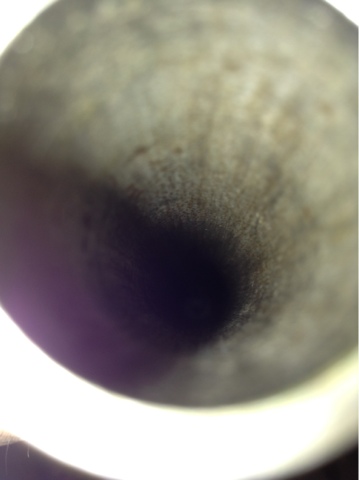This last is from William Duane's book of tactics for the United States Infantry. It explains why a lot of commanders during the Napoleonic period favored columns for offensive action: they offered the most flexible, stealthy, and simple way to get a lot of men to the decisive point in a battle. The trick lay in "unpacking" the column when the time came. British units in Spain often foiled French columns by harassing their protective cloud of skirmishers, by hiding their lines of battle behind ridge lines until a decisive moment, and by counter-charging the front of a column. British commanders used columns of attack a lot during the War of 1812-- notably at the Siege of Detroit in 1812, the Siege of Fort Erie in 1813 and the Battle of New Orleans in 1815.
On another note, this weekend I took my 1795 Springfield flintlock musket out to a rifle range to shoot. The results were... less than satisfactory. At 25 yards I had trouble hitting a yard sign that had been pressed into service as a target. Part of the problem was humidity. Yesterday was the first rainy day we've had in Ohio for a while. Contrary to popular belief, rain doesn't keep a flintlock from working. You can have a perfectly decent skirmish even in a steady rain shower-- if your priming pan stays dry. As we were sheltered under an overhang and the rain had stopped, I didn't think that moisture would be a problem. However, the gunpowder residue in my flintlock seemed to suck the moisture out of the humid air, leaving a black sludge on my priming pan.
I was still able to fire the weapon, with some misfires due to the sparks not reaching the priming. Every time I fired, however, there was what seemed a longer than usual delay between the time I pulled the trigger, the flash in the pan, and the actual shot of the musket. My thesis is that the delay caused by humidity (and maybe a misaligned vent, see below) caused me to flinch involuntarily when the priming went off, sending the muzzle (five feet distant from my face!) off target.
I took my musket out this afternoon to oil up (I had cleaned it shortly after shooting) and by chance happened to look down the bore. What a shock! The exterior of the gun was shiny thanks to a long overdue treatment with a sanding sponge, but the interior of the bore was covered in red rust. Maybe I hadn't put enough bore butter (a yellow grease) to coat the gun after I had cleaned out all the fouling. This is certainly a good lesson learned: humidity levels when shooting and when cleaning can drastically effect the performance of a flintlock weapon.
 |
| The musket is held together with screws, pins, and springs. All the essential bits can be taken apart in the field for a thorough cleaning. |
 |
| Some more preservative tools: oil for the exterior metal parts, one of many rags, and an oilcloth gun sack. |






No comments:
Post a Comment
Note: Only a member of this blog may post a comment.